How to Brush a Cat: 6 Vet-Approved Steps

Updated on
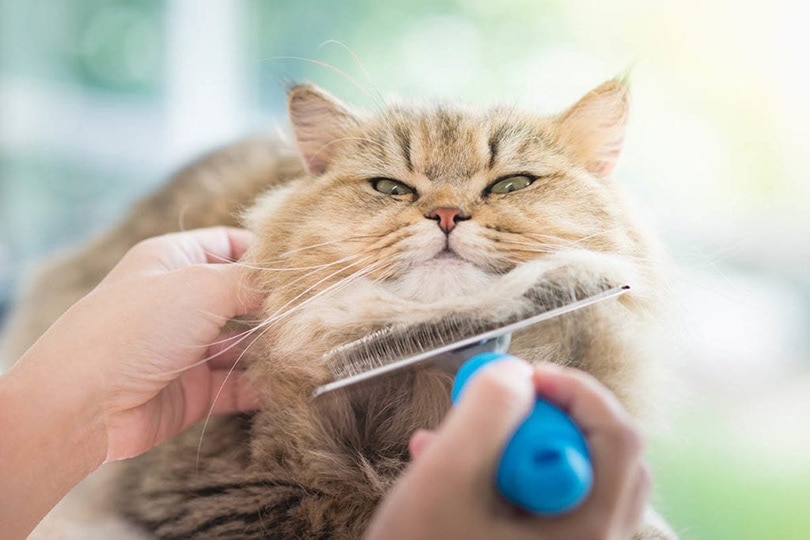
As the owner of a cat, you know that your feline friend grooms himself regularly by licking every little bit of his fur. This self-grooming is done to remove dirt and grime, help prevent matting, and stimulate the skin underneath to keep it healthy. But even though your cat grooms himself every day, you should step in regularly to give your cat a good going-over with a brush.
When you brush your cat, it will help keep his coat and skin healthy, reduce the chance of hairballs1, and assist in maintaining a strong bond between the two of you. But you need to brush your cat properly using the right tools and techniques to ensure the grooming pays off.
Because cats can be picky about how you brush them, what you are brushing them with, and how long the grooming takes, we are here to give you some helpful tips on how to properly brush a cat. Whether your cat allows you to brush his whole body or just a part of his body like his neck or back, always strive to make the brushing a pleasant experience so your cat learns to accept it.
Below are a few tips for helping you learn how to brush a cat.
The 6 Steps on How to Brush a Cat
1. Gather Your Supplies
To ensure your grooming sessions run as smoothly as possible, have your supplies ready. The most important thing you’ll need is a good brush. A cat slicker brush with coated tips is a good pick for any cat with hair, regardless if the hair is thick, thin, long, or short. This type of brush will quickly and easily detangle fur, remove loose hair, and smooth the coat to give it a nice sheen.
Another good pick is a grooming glove because it is suitable for all hair types. A grooming glove’s soft rubber tips do a good job of removing dirt, and loose hair, de-tangling, and massaging the skin to evenly distribute natural oils throughout your cat’s coat.
You also need to have some cat treats handy so you can reward your little buddy for putting up with the brushing routine. It is also wise to have a damp washcloth on hand in case you need to smooth fly-away hair or remove stubborn dirt and grime from your cat’s coat.
If you need a great brush, we recommend the Hepper Cat Brush. This easy-to-use product reliably removes loose hair and knots, and you can clean it with the touch of a button! Try it and you’ll see why this brush is perfect for you and your cat.
- ONE PUSH RELEASE - This kitten brush / cat brush pops out fur with just a simple press, leaving you...
- DURABLE - Cat shedding can be a tough ordeal. Made of resilient ABS plastic and metal bristles with...
2. Choose a Peaceful and Quiet Time
To ensure the brushing session goes along as planned, pick a time of the day when your cat is relaxed and when things are peaceful in your home. If you have kids and other pets at home, find a spot where you can quietly groom your cat without any interruptions.
It is equally important that your cat is calm and relaxed when you’re brushing him. Maybe your cat is the most relaxed following mealtime and after he’s been outside playing and burning off energy. Just pick a calm time and place to brush your cat so he won’t become distracted or scared.
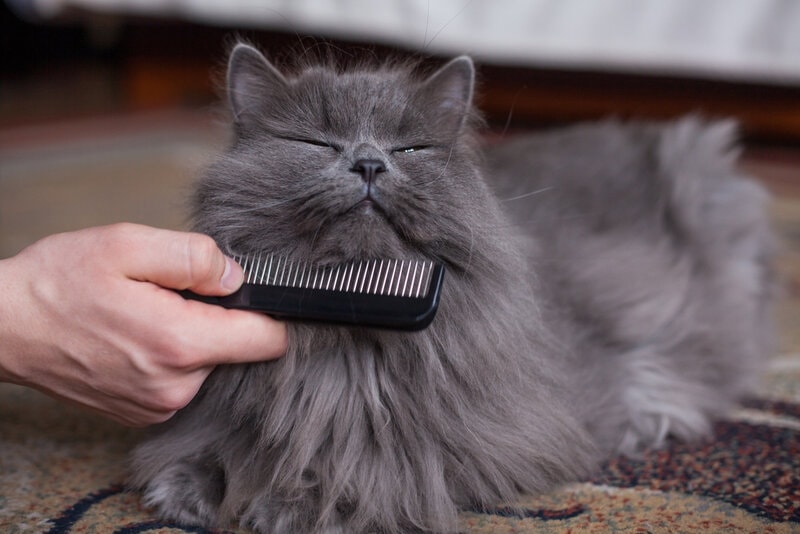
3. Stroke his Fur and Move Slowly While Brushing
Begin the brushing session by gently stroking your cat’s fur with the brush. Start with the areas on his body where you know he likes to be petted, which is likely on his back, top of the head, behind the ears, or under the chin.
As your cat becomes more receptive to the brushing, slowly work your way to other areas on his body like his back, rear end, and legs. When it’s time to brush his more sensitive belly. be prepared for a swat or scratch! If your cat doesn’t want you brushing his belly, take it in stride and calmly go back to brushing where he’s most comfortable.
4. Don’t Rush
The key to a successful brushing session is to take it easy and refrain from rushing. No matter what, always stay focused on taking things nice and slow. The last thing you want to do is stress your cat to the point that he associates brushing with negative feelings, so remain calm and take your time.
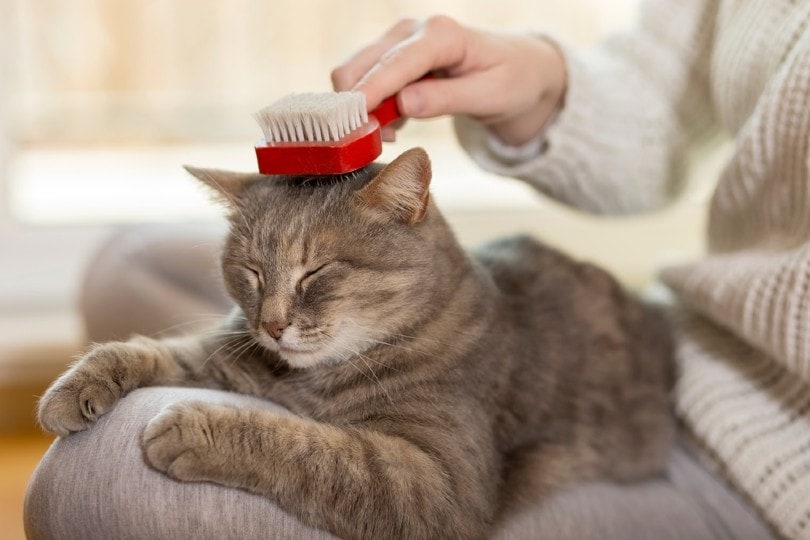
5. Reward Your Cat for Good Behavior
When you finish a brushing session, take a few minutes to play with your cat and give him a special treat. This will help your cat associate brushing with fun and food. It’s a good idea to buy your four-legged friend a new and exciting cat toy, like a colorful wand teaser that he’ll be thrilled to play with after each brushing session.
6. Keep the Sessions Short and Sweet
If your cat can’t stand being brushed, keep the brushing sessions brief. But if your cat enjoys being brushed, spend a good 5–10 minutes brushing your cat during each session.
Remember that cats don’t generally like being brushed and they’re easily distracted, so don’t overdo it. As far as frequency goes, most cats can benefit from two to three brushings a week. If your cat has a thick and fluffy coat, you may need to brush him daily to maintain that gorgeous hair.
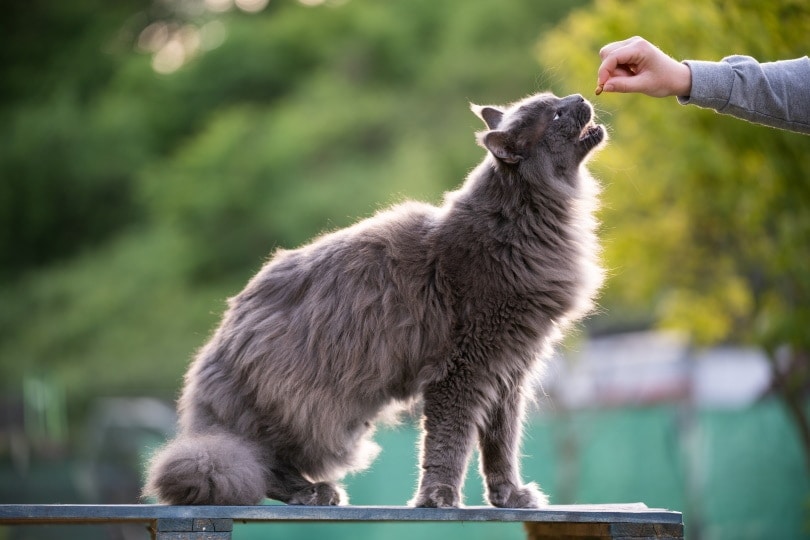
What to Do If You Run Into Mats
If you discover matted hair while you’re bruising your cat, don’t grab the nearest pair of scissors! Instead, call your vet or groomer and ask for their help in removing the matts.
How to Help Your Cat Maintain a Healthy Coat
A cat with a healthy coat of fur is a joy to touch and beautiful to look at. But even though your cat may be a great self-groomer and you regularly brush him, he can still develop a coat that’s unhealthy and dull.
The best way to help keep your cat’s fur shiny and healthy is to provide him with a nutritious diet. A top-notch cat food will have the right balance of fats, carbs, proteins, minerals, and vitamins necessary for maintaining a healthy and shiny coat.
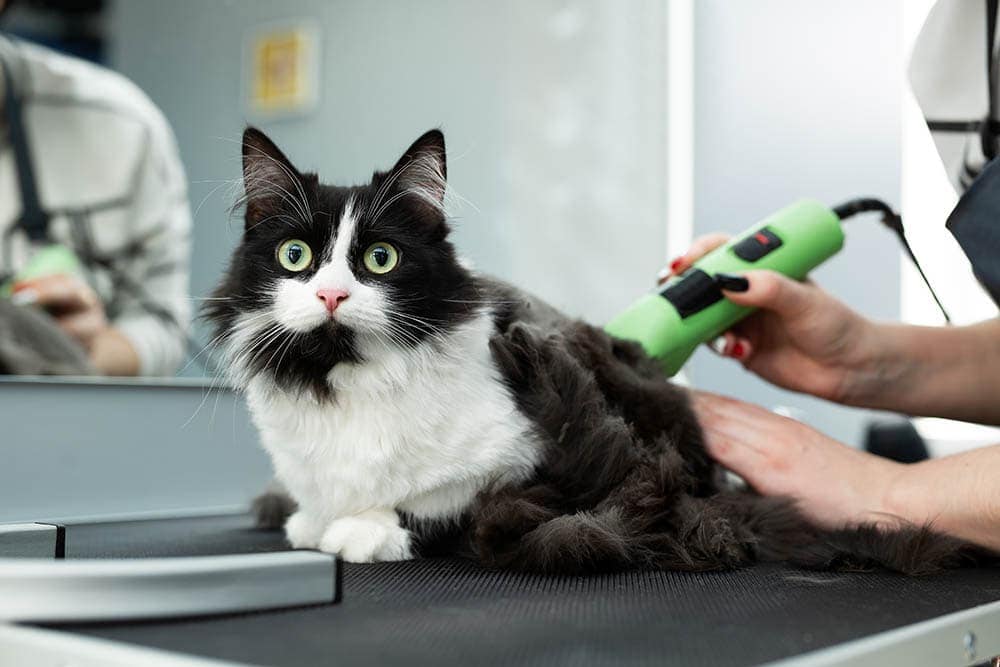
Conclusion
Even though cats are good self-groomers, they need human intervention now and then in the form of a good old-fashioned brushing. When you brush your cat regularly, it will help keep his coat and skin healthy, reduce the chance of hairballs, and help you maintain a strong bond with your cat. Just follow the practical cat brushing tips above, and you’ll be good to go!
Featured Image Credit: ANURAK PONGPATIMET, Shutterstock












